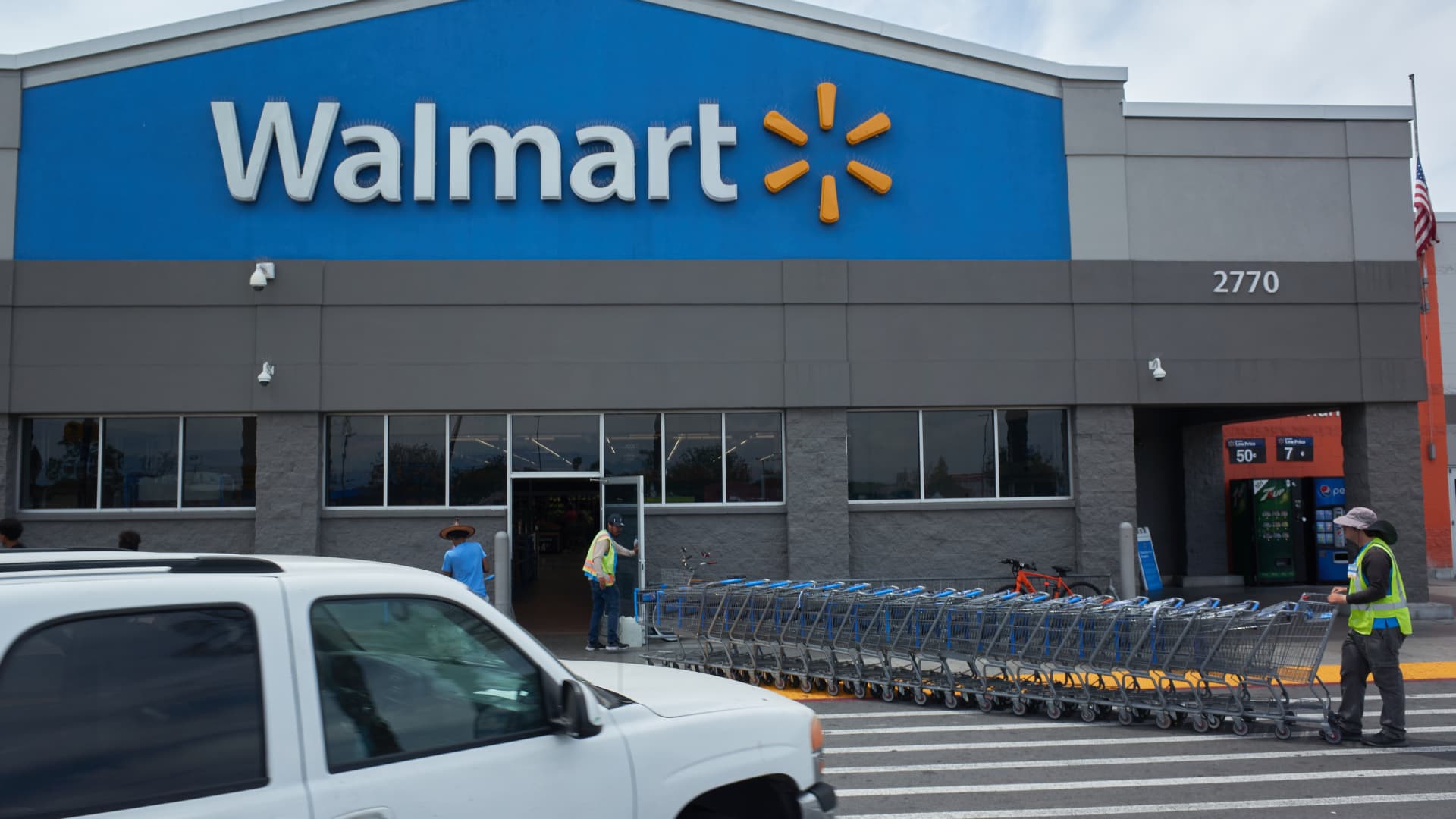Walmart on Tuesday reported quarterly earnings that missed Wall Street’s expectations by a wide margin, as the nation’s largest retailer felt pressure from rising fuel costs and higher levels of inventory.
Shares were down nearly 7% in premarket trading.
The company raised its outlook for sales this year, saying it expects net sales to increase about 4% in constant currency for the full year. It previously anticipated a 3% increase.
But Walmart also lowered profit expectations. Earnings per share for the year will decrease by about 1% compared with the mid single-digit increase it previously expected, the company projected.
In an interview with CNBC, Chief Financial Officer Brett Biggs said the significant jump in fuel prices, elevated labor costs and aggressive inventory levels weighed on the company. He said some merchandise arrived late and other items, such as grills, plants and pool chemicals, didn’t sell due to “unseasonably cool weather in the U.S.”
Plus, he said, Walmart employees returned from Covid leave quicker than expected and caused the company to become overstaffed during part of the quarter. He said those scheduling challenges have been resolved.
The discounter’s bottom line results “were unexpected and reflect the unusual environment,” CEO Doug McMillon said in a release Tuesday morning. Inflation in the U.S. is at a nearly four-decade high.
“We’re adjusting and will balance the needs of our customers for value with the need to deliver profit growth for our future,” he said in a news release.
Here’s what the discounter reported for the fiscal first quarter ended April 29, according to Refinitiv consensus estimates:
- Earnings per share: $1.30 adjusted vs. $1.48 expected
- Revenue: $141.57 billion reported vs. $138.94 billion expected
In the quarter, Walmart’s net income fell to $2.05 billion, or 74 cents per share, from $2.73 billion, or 97 cents per share, a year ago. Excluding items, the company earned $1.30 per share. That’s lower than the $1.48 that analysts were expecting, according to Refinitiv.
Total revenue rose to $141.57 billion from $138.31 billion a year earlier, above Wall Street’s expectations of $138.94 billion.
Same-store sales for Walmart U.S. grew 3% compared with the year-ago period or 9% on a two-year basis. E-commerce sales rose 1% or 38% on a two-year basis.
Average ticket for customers in the U.S. rose 3% from the year-ago period. Transactions on the company’s website and stores were flat.
Walmart-owned warehouse club, Sam’s Club, saw same-store sales increase 10.2% year over year or 17.4% on a two-year basis.
Walmart is a much-watched company as investors and economists look for clues about how the American consumer is weathering inflation – and if they are starting to pull back on spending. The consumer price index, a broad measure of prices for goods and services, increased 8.3% in April compared with a year ago, according to the Bureau of Labor Statistics.
Grocery, Walmart’s top sales category, is one of the hard-hit categories. Food costs rose 9.4% in April on a 12-month basis, according to unadjusted data from the BLS.
As shoppers look for value, Walmart is gaining market share in grocery, Biggs said. However, sales of food are pressuring margins, since items like eggs and cereal drive lower profits than discretionary merchandise like apparel and electronics.
Biggs said Walmart sees signs that some households feel budget strapped. For example, he said sales of half-gallons of milk and its private brand of lunch meat have jumped.
“There’s some signs of changed behavior in some customers due to inflation,” he said. “They’re certainly taking notice of inflation.”
On the other hand, he said, there’s still demand for the newest gaming consoles and patio sets. He said the second quarter is “off to a good start from a sales perspective,” with outdoor and apparel categories getting a lift from warmer spring weather.
Shares of Walmart closed Monday at $148.21. The stock has risen about 2.5% so far this year, outperforming the broader market as investors seek out consumer staples among economic uncertainty. The company’s market cap is nearly $408 billion.
Read the company’s earnings release here.
This story is developing. Please check back for updates.
